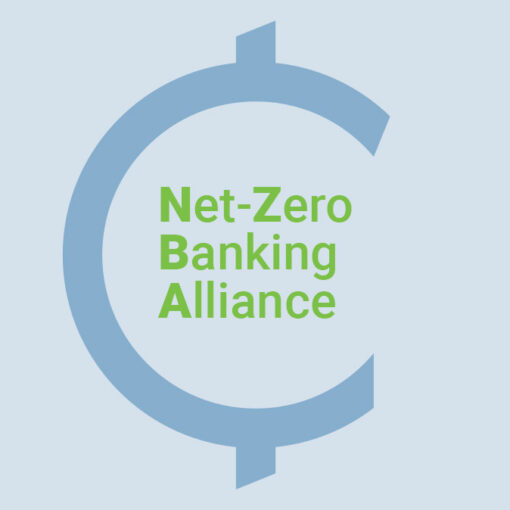
In recent years, climate experts and even regulators have increased attention on the financial sector as a driver of both emissions and capital formation in the low-carbon economy. There has been growing emphasis on “aligning” capital allocation by financial institutions to the transition to net zero greenhouse gases (GHG) in the hopes of both minimizing the disruption of the transition to efficient capital formation and accelerating the transition.
Any approach to aligning financial capital with the net-zero transition must take into account that the transition will be a rocky one. This is not only because of the vagaries of climate policy. The recent disruptions from COVID-19, the Russian invasion of Ukraine, and persistent fears of a global economic recession serve as reminders that the background economic conditions of decarbonization will also be in a state of constant flux, sometimes but not exclusively fueled by the climate crisis itself.
A new working paper published today by the Sabin Center for Climate Change Law and Columbia Center for Sustainable Investing explores how financed emissions – a metric commonly used to associate financing and emissions – handles economic volatility.
Various methodologies have been developed over the last decade to link financial institutions’ portfolios to GHG emissions in the “real” economy, enable them to estimate exposure to climate-related financial risk and provide shareholders and investors a picture of how their financial activity impacts global climate change. Among these approaches, analysis and disclosure of “financed emissions” by financial institutions has become increasingly common (driven largely by the Partnership for Carbon Accounting Financials). Financed emissions methodologies extend the GHG protocol’s framework for emissions footprinting to capture the indirect emissions effects of financial activities.
In general, financed emissions metrics at the portfolio level are derived from the aggregation of (a) a calculation of the GHG footprint of each company in a financial portfolio multiplied by (b) an “attribution factor” that captures the financial institutions’ share of the financial value of that portfolio company. This calculation has become popular because it provides a single measure of portfolio progress, because of the familiarity of the GHG protocol among relevant stakeholders, and because it provides third parties a practical means to attribute emissions to financial institutions.
Critics of financed emissions have, however, pointed to two core methodological challenges. First, comparability between financial institution disclosures is hampered by the very different and often material assumptions buried in underlying calculations made by each financial institution. Additionally, the constant volatility of the denominator – measures of portfolio companies’ financial value – makes it difficult to interpret the relationship between the metric and actual real-world emissions at any given time.
The new paper published today models volatility on a hypothetical financial portfolio of five high-emissions industries and compares the different methodological choices applied by financial institutions in calculating the metric. We found that the most commonly used attribution factor to calculate financed emissions – enterprise value including cash, or EVIC – exacerbates the effect of volatility on the metric. Using accounting metrics (like book value) to calculate financed emissions across the whole portfolio may potentially reduce – but does not eliminate – the impact of volatility while maintaining comparability.
Financial contractions present a critical challenge for the financed emissions methodologies now adopted by many of the world’s financial institutions. In an economic downturn – like that from COVID-19 and the current threat of another global recession – one might expect the denominator of any financed emissions calculation (the measure of financial value) to decrease much faster than the numerator (the measure of emissions). This means that, even though actual emissions may decrease in a contraction, the economic shock will create the appearance of much greater financed emissions from individual financial institutions. This effect would occur even if financial institutions were to actually reduce emissions exposures, as hoped, due to their own portfolio reallocation and engagement.
Critics of the financial sector may not care much if an economic contraction will make financial institutions look worse on their chosen sustainability metrics, but the inverse is also true. A major global market rally, for example, would create the appearance that investors have greatly reduced financed emissions even if they did not actually change their behavior in any way. Worse still, even a market rally associated with greater emissions in the real world could be associated with a substantial decline in apparent “financed emissions.”
The goal of financed emissions, or any alignment methodology, is transparency, accountability, and orderly management of emissions with the common goal of reducing the risks posed by climate change to financial institutions and society as a whole. To function as such, these methodologies must be as robust as possible. Ensuring that alignment methodologies are robust to economic shocks, or even the business cycle, is essential to their relevance.
Read the full paper here.

Ilmi Granoff
Ilmi Granoff is currently a partner at the strategic advisory firm Climate Technology Group and a senior fellow at the Sabin Center for Climate Change Law. He is also a member of the Climate-related Financial Risk Advisory Committee (CFRAC) of the Financial Stability Oversight Council at the US Department of the Treasury, and a visiting senior fellow at the Grantham Research Institute at the London School of Economics. Ilmi is a non-executive director of Carbon Tracker Initiative, Inc. and a member of the Advisory Board of InfluenceMap.




